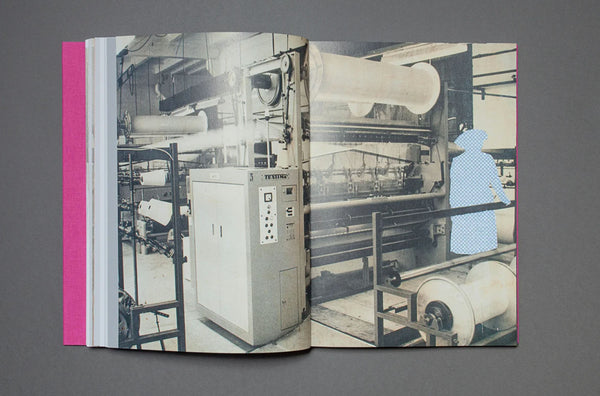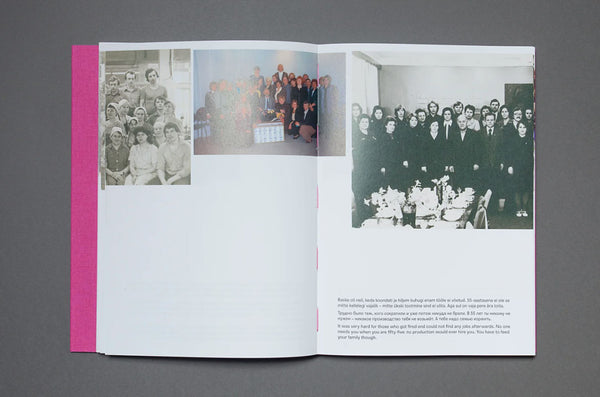



Maria Kapajeva
Dream is Wonderful, Yet Unclear
Milda Books, Latvia — 2020
Dream is Wonderful, Yet Unclear is a multi-layered and multi-disciplinary story of the relationships between collective and personal memories by looking at the community surrounding a textile mill in Narva, Estonia, now closed, of which Kapajeva's family was a part. The story of one small community is set in the larger context of post-industrial cities worldwide, as they seek new identities. It depicts a mill filled by powerful rhythms of looms and lively collectives of women workers that, in today’s competitive world seems like a bright and distant dream. Maria has focused on women, with a heightened sensitivity towards social and political matters in post-Soviet culture.
Maria Kapajeva, as the daughter of a textile designer, spent her childhood at the mill, drawing fabric patterns and dreaming about the same job her mother had. She tries to interweave her mother’s work, her childhood dreams and their failures with the workers’ collective ones to underline the division between personal and collective memories that together form our historical narratives.
The title Dream is Wonderful, Yet Unclear is borrowed from the lyrics of March of Enthusiasts, from the Soviet movie The Bright Way (1940), starring Lyubov Orlova in the role of a female weaver, who made her ‘Cinderella’ journey from peasant to Stakhanovite, a heroic worker. This line of the song was later censored because of doubt raised by the word ‘unclear’. The idea of a wonderful dream is intended as a common thread throughout the book but so too is the lack of clarity that characterizes our memories of the past.